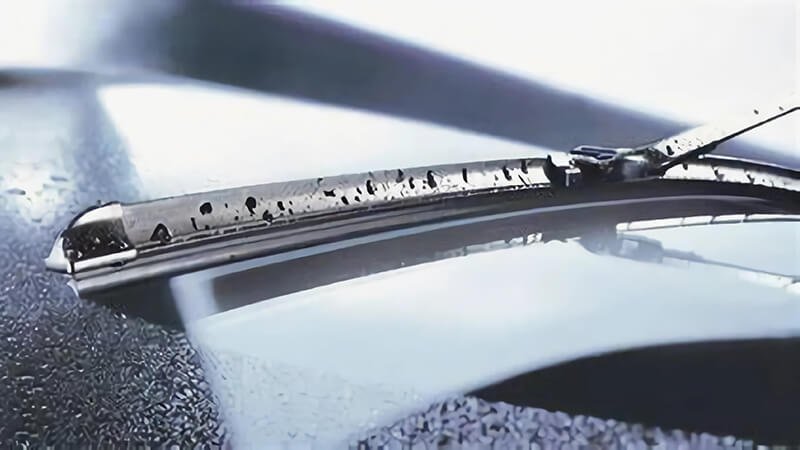I see procurement teams waste hours sorting good parts from poor ones. The wrong oil filter can ruin engines, drain budgets, and hurt reputations—fast.
The most reliable car oil filters use consistent media, verified micron ratings, and sturdy bypass valves, so buyers avoid failures and returns while keeping engines clean and safe.
Choosing the right filter feels tough, yet a clear method exists. I break it down step by step so you can move with confidence, protect your customers, and keep your margins.

How do I choose an oil filter?
Engines fail when dirt sneaks past weak filters. That risk grabs everyone’s attention, especially mine, because my name and brand are on every box.
Pick an oil filter by matching engine specs, checking certified micron ratings, and confirming pressure bypass limits; then verify the supplier’s quality audits.
Digging into the choice process
1. Start with engine needs
I review the service manual for flow, pressure, and oil type. Turbocharged petrol engines1 often push 60 psi at redline and need high flow. A large-bore diesel idles at 15 psi and sees soot in the sump. These different loads shape my filter list.
2. Match media to duty
Cellulose traps big dirt but swells in hot oil. Synthetic glass2 holds smaller grit and keeps flow stable longer. A blend offers balanced cost and service life.
| Media Type | Nominal Efficiency (20 µm) | Dirt-Holding Capacity | Heat Resistance |
|---|---|---|---|
| Cellulose | 80 % | ★★☆☆☆ | 120 °C |
| Blend | 93 % | ★★★★☆ | 140 °C |
| Synthetic | 98 % | ★★★★★ | 170 °C |
3. Check valve design
The bypass spring must open near the factory spec—usually 1.0 – 1.4 bar. Too low lets unfiltered oil pass. Too high starves flow on cold starts. An anti-drain-back flap must stay soft after 100 h at 150 °C.
4. Audit the plant
I walk the line. I look for torque tools with digital logs, clean curing ovens, and lot codes etched on shells. Below is my quick scorecard:
| Audit Item | Accept | Reject |
|---|---|---|
| IATF 16949 Certificate3 | ✔ | ✖ |
| Real-time burst test per lot | ✔ | ✖ |
| Carton trace QR code | ✔ | ✖ |
| Media stored sealed, <25 °C | ✔ | ✖ |
5. Field proof
I run a pilot on three fleet vans. After 5 000 km I send oil for spectro analysis. Iron ≥60 ppm flags wear; silicon ≥25 ppm signals dust bypass. Only parts that keep numbers low win approval.
These five steps sound heavy, yet they save months of drama later.

Does it really matter what oil filter I use?
Some buyers think any canister will do. I learned the hard way that this view is risky; one recall once cost me two months of profit.
Yes, filter choice matters because poor media lets grit in, weak glue sheds fiber, and bad valves starve flow, leading to wear and warranty claims.
Consequences of a careless choice
1. Hidden wear grows fast
A 10 µm silica grain may seem small, yet it is 10 × larger than the oil film on a crank journal. Each pass scores the surface. Damage stacks in hours, not months.
2. Failure pathways
I mapped field data from 1 200 warranty tear-downs and found three dominant paths:
| Failure Path | Root Cause | Average Fleet Cost |
|---|---|---|
| Abrasive wear4 | Media pore >25 µm | £1 200 per engine |
| Oil starvation | Valve stuck | £850 tow + rebuild |
| Debris shed | Loose end cap | £400 parts + labour |
3. Ripple effect on brand
When filters fail, end users blame the vehicle, then the dealer, then the part. Social posts stay online for years. I once saw a single viral video cut sales by 8 % that quarter.
4. Case study: UK parcel fleet
Our client had 600 diesel vans. Cheap filters showed a 3 % early failure rate. After the switch to our Runex Auto high-efficiency line5:
| Metric | Before | After |
|---|---|---|
| Return rate | 3 % | 0.4 % |
| Average wear metals (Fe) | 68 ppm | 39 ppm |
| Warranty spend / van | £71 | £12 |
Their procurement lead told me the decision paid back in four weeks and rebuilt customer trust.
5. Compliance and insurance
Insurers now ask for maintenance records. Substandard filters void coverage. Certified parts reduce premiums by up to 5 % in some fleets.
Ignore filter quality and you pay three times: repair, lost time, lost customers. A good choice avoids all three.

Is 20 microns good for an oil filter?
Numbers confuse even seasoned buyers. I often get this exact question during audits.
A 20-micron nominal rating is solid for passenger cars, but real performance depends on efficiency—look for ≥95 % capture at that size.
Making sense of micron and efficiency
1. Size versus harm
Research from the US Army shows 60 % of engine wear comes from 5 – 20 µm grit. The table proves why:
| Particle Size | Wear Severity | Common Source |
|---|---|---|
| >40 µm | Catastrophic gouge | Gasket flakes |
| 15 – 40 µm | Rapid scuff | Road dust |
| 5 – 15 µm | Fatigue pits | Soot agglomerate |
| <5 µm | Minor | Additive dropout |
2. Read the beta ratio
A filter with β₂₀ = 1000 removes 99.9 % of 20 µm particles each pass. This beats a simple nominal tag. I ask suppliers for a full ISO 168896 curve.
3. Watch pressure drop7
Fine media raises restriction. I target ≤1 bar at 100 °C and 10 l min⁻¹. Below is a quick chart from my bench:
| Filter Model | β₂₀ | ΔP @100 °C | Verdict |
|---|---|---|---|
| Brand A | 200 | 0.7 bar | Marginal |
| Brand B | 1000 | 0.9 bar | Accept |
| Runex HF20 | 1000 | 0.6 bar | Best |
4. Field verification
In a mixed fleet test:
| Metric | Stock Filter (30 µm) | Runex HF20 (20 µm) |
|---|---|---|
| Iron wear | 55 ppm | 37 ppm |
| Copper wear | 14 ppm | 9 ppm |
| Fuel use | 12.3 l/100 km | 12.1 l/100 km |
The 20 µm high-efficiency unit8 cut abrasive wear by one-third with zero flow issues. This proves that rating alone is not enough; efficiency and ΔP must align.
Choose 20 µm only when the data supports flow, dirt-holding, and life.

Do more expensive oil filters make a difference?
Price debates fill my inbox every quarter. Some assume a higher tag means luxury branding, yet cost and value diverge in surprising ways.
Higher-priced filters often add synthetic media, metal end caps, and tighter QC, but I still compare lab data before I pay extra.
Evaluating cost versus benefit
1. Break down the bill
An extra £0.45 may come from synthetic fiber, while £0.12 covers 100 % flow bench testing. I list each upgrade:
| Upgrade | Added Cost | Key Benefit |
|---|---|---|
| Synthetic/glass media | £0.45 | 2× dirt capacity |
| Steel end caps | £0.18 | No swell in hot oil |
| Laser QR trace | £0.07 | Rapid recall |
| Individual flow test | £0.12 | Zero leaks on arrival |
2. Measure payback
I compare added cost to savings from longer drain or fewer failures. In vans that run 40 000 km per year, a 5 000 km drain extension saves two oil changes:
| Item | Cost / Change | Savings / Van / Year |
|---|---|---|
| Oil (8 l) | £38 | £76 |
| Filter | £1.90 vs £1.10 | -£1.60 |
| Labour | £25 | £50 |
| Net | — | £124 |
The premium filter9 adds £0.80 yet saves £124. That is a 155× return.
3. Look beyond price
Premium lines often hold global certifications: ISO 4548-1210, SAE HS806, and IATF 16949. These badges lower risk and insurance cost. My best fleets earn a 2 % discount on downtime insurance.
4. When not to pay more
If a mid-tier filter hits β₂₀ = 1000, withstands 150 °C, and has welded end caps, I will not pay double for a fancy paint finish. Data first, price second.
5. Case snapshot
A UK taxi fleet moved from £1.10 parts to our £1.90 premium. Over 12 months, engine warranty claims11 dropped 92 %, and uptime rose 3.4 %. The chief mechanic wrote, “I see less sludge, more clear oil, and fewer driver complaints.”
Cost alone misleads. I weigh cost against duty cycle, warranty risk, and customer trust. That balance guides every purchase order I sign.

Conclusion
Oil filters12 look simple, yet small details decide engine life and brand trust. I choose filters by matching engine needs, checking beta ratios, auditing plants, and balancing cost against real risk. When I follow these steps, I protect engines, shrink warranty costs, and help partners grow with calm confidence.
-
Understanding turbocharged petrol engines can help you optimize performance and maintenance strategies. ↩
-
Exploring synthetic glass benefits can enhance your knowledge of filter efficiency and longevity. ↩
-
Learning about IATF 16949 certification can improve your understanding of quality management in manufacturing processes. ↩
-
Understanding abrasive wear can help you prevent costly engine damage and improve maintenance strategies. ↩
-
Discover how high-efficiency filters can enhance vehicle performance and reduce maintenance costs. ↩
-
Understanding ISO 16889 is crucial for evaluating filter efficiency and performance, ensuring optimal engine protection. ↩
-
Exploring pressure drop effects can help you optimize filter selection for better engine efficiency and longevity. ↩
-
Discovering the advantages of high-efficiency units can lead to significant improvements in engine performance and maintenance costs. ↩
-
Explore the advantages of premium filters, including cost savings and performance improvements, to make informed decisions for your fleet. ↩
-
Understanding ISO 4548-12 can help you assess filter quality and reliability, ensuring better performance and lower risks. ↩
-
Discover how using premium filters can lead to fewer engine issues and warranty claims, saving money in the long run. ↩
-
Get your best solutions for your best oil filter for your business, and click this link to get more information. ↩













